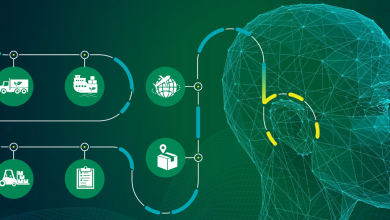There remain many misconceptions about implementing automation. Guidance Automation’s recent research identified the greatest perceived barriers to be the costs involved / budget constraints (76%), the need to up-skill staff (74%), and the belief that warehouse processes are too changeable (63%). But a further widespread myth is that a business may be ‘too small’ for automation. This is emphatically not the case.
As Dr Paul Rivers, Managing Director of Guidance Automation explains, small and medium-sized enterprises (SMEs) shouldn’t be left behind, and instead, can level the playing field by embracing automation with an approach that best suits their business needs.
The SME Market
SMEs are the backbone of Europe’s economy, representing 99% of businesses in the EU and employing over 100 million people. Specifically in the UK manufacturing sector, there are over 130,000 SMEs who are all leading the way in innovation – with research highlighting that SME manufacturing output grew at the fastest pace on record in the three months to July 2021
However, both SMEs and larger organisations continue to face the same logistical challenges – from increasing material and labour costs, to a shortage of skilled resources. And particularly for SMEs, it can be more challenging to attract workers – especially while the country faces a large skills gap within manufacturing. Yet, these hurdles can, to an extent, be overcome by beginning to embrace automation – whether it is through a gradual or flexible approach, such as implementing one or two robots or renting autonomous vehicles – allowing SMEs to start to reap the benefits without overhauling existing processes.
Additionally, SMEs have the upper hand. With agility and flexibility on their side, SMEs can capitalise on their ability to pivot quickly and make decisions, such as deploying innovative technologies, without having to go through as many hierarchical levels for sign-off. Therefore, the key question remains – what is stopping them from leveraging the benefits of automation?
Embracing Automation
Automation is transforming industries around the globe – yet in the SME market, 57% of manufacturing leaders feel that they aren’t confident with technology, and are falling behind in terms of digital adoption. Despite hesitancy, the use of automation in the warehouse holds great potential for SMEs – including improved labour allocation, enhanced productivity and reduced errors.
With the right technology in the right place, SMEs can automate mundane tasks – releasing the workforce to be upskilled and take on more advanced, value-added jobs and better manage process changes as they arise. For example, taking a collaborative and cost-effective approach, one or two robots can be added to any size manufacturing business without the need for disruption, while delivering business improvements – reallocating staff to more profitable areas and allowing the robot to undertake the repetitive labour. This is particularly beneficial for the small-to-medium business market to improve job satisfaction, and in turn, labour retention.
Test Before You Buy
While different levels of automation exist, today’s smaller businesses may not necessarily understand how automation could benefit their organisations, as 62% of respondents to the Guidance Automation research indicated, or how it can fit into existing processes. The survey also found that 58% of respondents believed that the nature of change when embracing automation would be both sudden and rapid. But there is no need to ‘rip and replace’ existing processes, which can result in significant business disruption. Instead, SMEs can realise the benefits of automation with a gradual or flexible approach.
Firstly, it is key to identify the right opportunities for automation, which can deliver immediate gains. To begin this process, SMEs should partner with an automation expert to undertake an assessment of their current warehouse or production facility in order to assess and advise on the viability of the project. An expert will be able to identify possibilities of where automation can be added, and the benefits and efficiencies that can be gained.
Once the most appropriate processes and matching technology have been identified, a logical next step is to consider a trial period, allowing staff to go through a ‘learning phase’ of working alongside the technology, while also demonstrating the benefits; from improved operational speed or increased efficiency. By ‘trying before you buy,’ SMEs can realise how easy and intuitive the automation process can be; how they can improve their operations; as well as how and where automation and humans can work together.
While reducing barriers to implementation, flexible (e.g. opex as well as capex) and gradual approaches to automation also enable SMEs to be able to cope with any fluctuation in the business, particularly during busy or peak seasons. This approach removes the need for investments in expensive and fixed infrastructure, and alternatively, businesses can add more robots or ‘cobots’ (collaborative robots) as they require, removing the need for seasonal staff while meeting demand. This comes in line with results from Guidance Automation’s recent research, as both low operation costs (35%) and increased productivity (31%) were identified as the most desired benefits of using Autonomous Mobile Robots (AMRs). With the ability to start small and scale up, automation is achievable with minimal disruption and upheaval.
Conclusion
The cost and disruption of automation have previously made implementing new technology a challenge for manufacturing SMEs. But as robots and AMRs continue to become more accessible and cost-effective, small-to-medium businesses should consider the long-term benefits of investing in automation. By partnering with an automation expert and undergoing a small-scale trial, SMEs can understand how automation can be embedded in any organisation, of any size, to create an efficient and flexible working environment – that can also help them to remain competitive against their larger counterparts.




